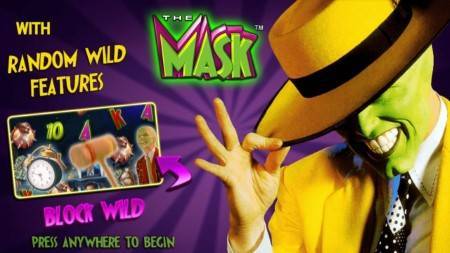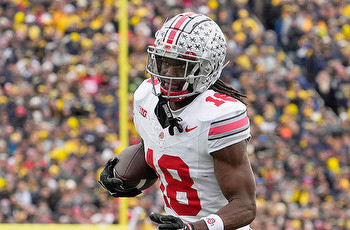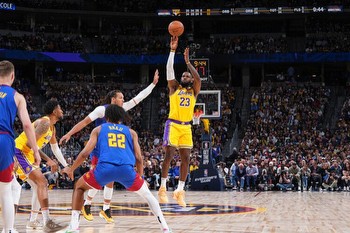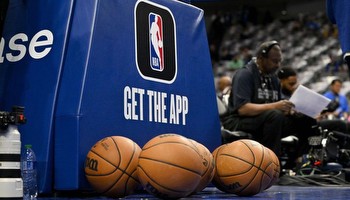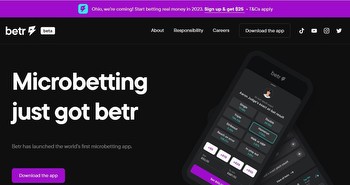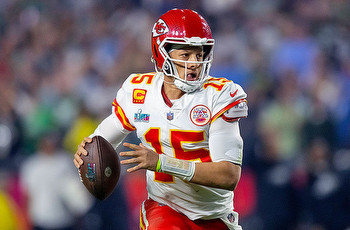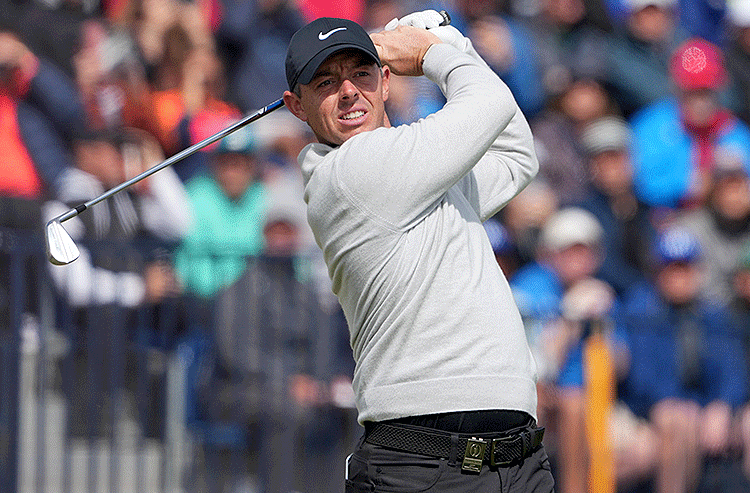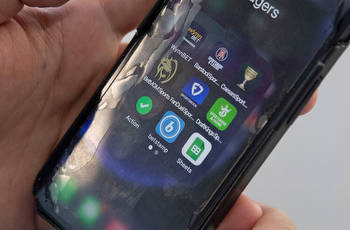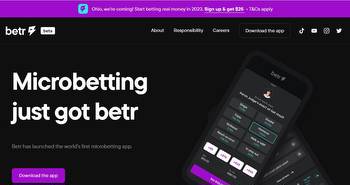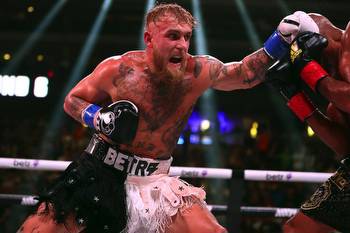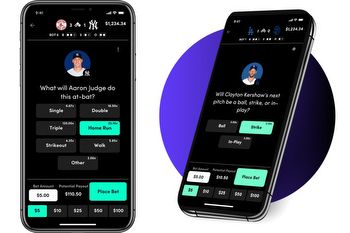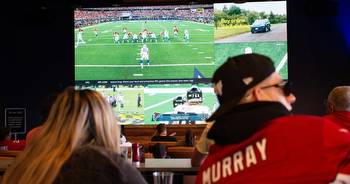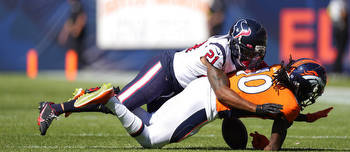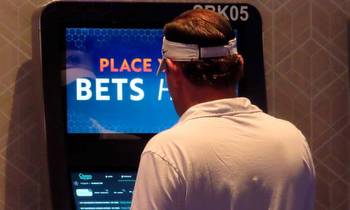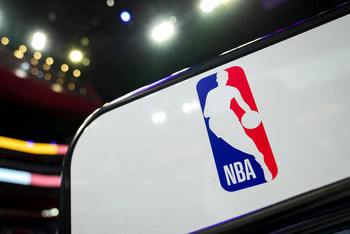Microbetting is on the rise, with endless live-betting possibilities on the horizon
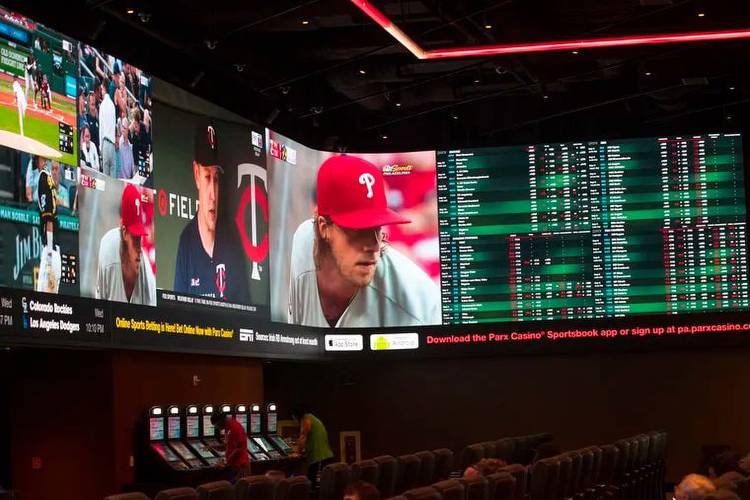
NEW YORK — It’s after 6 p.m. on a Tuesday night in early May in what will become a busy sports night. But it’s still early, and so a lone baseball game is the only game on the televisions inside the Park Avenue offices of Simplebet, the leader in microbetting technology.
A Simplebet trader is showing off that technology as the Guardians and Tigers play a game in Cleveland.
Will Cleveland starter Shane Bieber’s next pitch exceed a certain miles-per-hour threshold? Will the next pitch result in a hit? Will it be a home run?
On another screen, bets are flying in. Simplebet serves multiple operating partners, including DraftKings, Caesars and bet365, and in real-time, users across the company’s operating partners are betting not only on the next pitch in this game but other “micro” events in other games. The Yankees and Athletics don’t start for another half hour, but a bet has been made on Aaron Judge’s first at-bat. Game 5 between the Sixers and Celtics tips off in less than two hours, but several bettors have placed money on which team will be the first to reach 15 points.
Yes, you really can bet on almost anything, and the overall number of things you can wager on is growing.
Ryan Keur, Simplebet’s vice president of revenue and trading, said microbetting makes up for about 25% to 30% of all in-play wagering. During a panel discussion a day later at the SBC North America Summit, Andrew Bimson, president and chief operating officer at Sportradar, a provider of data and statistics, said microbetting accounts for about $1.5 billion to $2 billion in handle now — a small share of an industry that took in $93.2 billion in bets in 2023 — and could reach as much as $20 billion by 2027.
That’s a lot of bets on a lot of small, fast-changing markets. It may sound a bit lofty, but stakeholders in the sports betting industry have reason for optimism. The microbetting game is young and already showing how powerful it can become.
But how will the 10-times jump in five years happen? Many involved have a good idea how, but getting there is the challenge.
‘Toilet gaming’
Microbets are more than just betting on every pitch in a baseball game, for example. There are dozens of markets across the major sports and the speed of game play is a big indicator of what kinds of bets you’ll be able to make (every pitch in baseball, every play in football, but not every play in a free-flowing game like basketball).
Simplebet said its median bet total for microbets is in the $5 to $7 range, although the average is more like $25 to $30 per bet — skewed largely by a few big-money bettors.
What fuels a bettor to be a microbettor, and how do they engage with their live betting app of choice?
“We sometimes talk about toilet gaming,” Keur joked. “You’ve got to get away from your spouse for 10 minutes and you’re going to go sit somewhere and you have the ability to kind of get in and out in that specific time frame.”
That’s one kind of microbettor. Some may just be looking to get an edge and are fine with following a low-latency game tracker. For others, it may be the joy of watching a game live — either in person or on a device — and betting on it as you do.
That’s where things get interesting. Increasingly, more sports fans are cutting the cord and going to streaming services like YouTube TV or Hulu for their live sports content. The NFL’s Sunday Ticket is now on YouTube. That means more fans than ever watch sports on a slight delay.
“On one side of the spectrum we knew that cord-cutting existed, and on the other side of the spectrum we knew that court-sided [viewing] existed,” Keur said. “And so you have to build a product that ideally can fit on both of those.”
A fan inside Yankee Stadium might have a great experience watching the game with his or her eyes and then looking down at the fan’s device to bet on the next action, but what about users at home?
“We think watch-and-bet obviously is where this industry goes,” Keur said.
It’s already going there. Last NFL season, Caesars offered a watch-and-bet experience for Sunday Night Football games.
“That was a couple seconds behind real time,” Keur said. “That was a really great, seamless experience.”
Game of runs
Data moves fast in this world. Bimson, the Sportradar executive, said his company collects and distributes data to its partners in about seven-tenths of a second. That’s a few blinks of an eye.
Right now, that’s faster than almost every fan watching or engaging with a game can keep up with unless that fan is inside the stadium.
Keur said Simplebet is prioritizing the delivery of real-time data and information to users. If Aaron Nola has thrown five straight balls, the bettor should have that context before betting on the next pitch.
But how does this all work for a sport like basketball?
Scott Kaufman-Ross, a senior vice president with the NBA who heads up the league’s fantasy and gaming department, said at the SBC Summit that the league has partnered with an outside company to do some research and development into microbetting.
“We don’t have those discrete events that baseball and football do, so we’ve been thinking about the category in a little bit of a different way,” Kaufman-Ross said at the summit, a major sports betting conference and trade show. “We could have three possessions in a span of eight seconds. It’s very difficult to ask a fan what’s going to happen on the next possession.”
So, what’s the alternative? Using the concept of basketball being a “game of runs.”
Bettors have access to “first to 15″ markets, which allow them to bet on which team will reach 15 points first. It has long been a pretty popular bet, especially on underdogs, during March Madness in sportsbooks.
“How do you make that an in-game concept?” Kaufman-Ross said. “How do you take first to 15 and turn that into something that happens at several points in a game so that at any point you’re predicting the next run?”
These new iterations and innovations don’t come without concerns. Betting’s boom in recent years has created more problem gamblers, and giving gamblers more avenues comes with risk.
“That heavy frequency is associated with gambling problems,” Keith Whyte, the executive director of the National Council on Problem Gambling, told the Associated Press. “You can get a hit of dopamine every few seconds; it’s more akin to playing a slot machine than betting on sports.”
Panelists during the microbetting session at SBC acknowledged that expansion needs to be done responsibly.
“The house always wins and consumers should expect to lose money over the long run,” said Joey Levy, a Simplebet cofounder who now runs Betr, a microbetting-focused sportsbook and media company. “We’re comfortable saying that because this product experience needs to be about entertainment value first and foremost. It should be like you’re going to the movies. You’re spending $20 on a movie ticket and you’re not getting anything intrinsically valuable for that except for two hours of entertainment.
“We approach microbetting in the same way. You allocate $20 or $50 or $100, whatever your budget is, toward making a $5 bet on an at-bat or a $2 bet on the next pitch.”
What comes next?
Industrywide, delivering low-latency video (meaning with minimal delay) to consumers in a visually pleasing way is the next major challenge, although operators will need some help from the leagues to make that possible. Right now, Keur said the user experience is about a “2 out of 10″ in terms of how visually pleasing it is compared to what it could be.
Levy said he envisions a world where one-third of a user’s screen is on a live broadcast and the other two-thirds is set up for microbetting.
“Maybe we get one game per week,” Levy said of the NBA.
“We’re certainly not opposed to bringing the content to the betting platform,” Kaufman-Ross said. The NBA is interested in this integrated viewing experience, however, and making it more personal.
“One of the things we see in the future is bringing live betting into the regular telecast, but doing it in an opt-in way,” Kaufman-Ross said. “The NBA believes that betting should be opt-in. Fans should raise their hand and say they want sports betting content, they want sports betting features, but we don’t want to thrust it upon them.”
The rapid move toward everything digital, Kaufman-Ross said, makes all of this innovation possible.
“It unlocks a whole new world of opportunity for microbetting,” he said. “How do we personalize it? How do we create what we’re calling a curation engine? We’re going to know what games fans watch, who their favorite teams are, how long they watch for.
“If we know someone is a Suns fan, we can push them a whole bunch of micro bets that are specifically focused on Kevin Durant and Devin Booker.”
